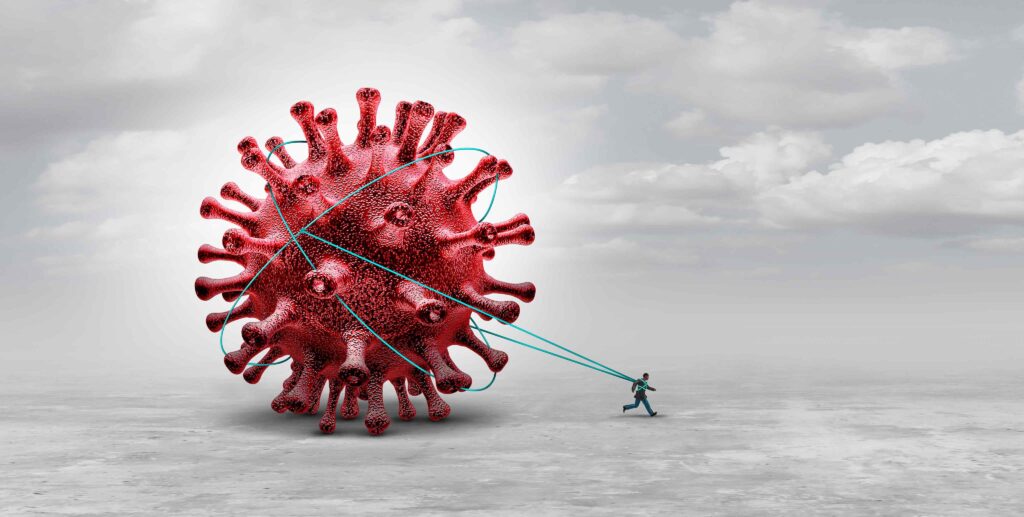 Triple threat. Tripledemic. A viral perfect storm. These frightening phrases have dominated recent headlines as some health officials, clinicians, and scientists forecast that SARS-CoV-2, influenza, and respiratory syncytial virus (RSV) could surge at the same time in northern hemisphere locales that have relaxed masking, social distancing, and other COVID-19 precautions. https://www.science.org/content/article/competition-between-respiratory-viruses-may-hold-tripledemic-winter?
Triple threat. Tripledemic. A viral perfect storm. These frightening phrases have dominated recent headlines as some health officials, clinicians, and scientists forecast that SARS-CoV-2, influenza, and respiratory syncytial virus (RSV) could surge at the same time in northern hemisphere locales that have relaxed masking, social distancing, and other COVID-19 precautions. https://www.science.org/content/article/competition-between-respiratory-viruses-may-hold-tripledemic-winter?
But a growing body of epidemiological and laboratory evidence offers some reassurance: SARS-CoV-2 and other respiratory viruses often “interfere” with each other. Although waves of each virus may stress emergency rooms and intensive care units, the small clique of researchers who study these viral collisions say there is little chance the trio will peak together and collectively crash hospital systems the way COVID-19 did at the pandemic’s start.
“Flu and other respiratory viruses and SARS-CoV-2 just don’t get along very well together,” says virologist Richard Webby, an influenza researcher at St. Jude Children’s Research Hospital. “It’s unlikely that they will circulate widely at the same time.”
“One virus tends to bully the others,” adds epidemiologist Ben Cowling at the University of Hong Kong School of Public Health. During the surge of the highly transmissible Omicron variant of SARS-CoV-2 in Hong Kong in March, Cowling found that other respiratory viruses “disappeared … and they came back again in April.”
Untangling such interference hasn’t been easy given the number of respiratory viruses—coronaviruses, rhinoviruses, adenoviruses, RSV, and influenza are just among the best known—and the many infections that escape notice. Recent advances in technology, however, make it easier to detect infections in people and study how multiple viruses behave in the lab, in cell cultures or stem cell-derived tissues known as organoids. Increasingly, researchers are fingering a cause: chemical messengers that infected people produce called, fittingly, interferons.
When a respiratory virus sweeps through a community, interferons can broadly raise the body’s defences and temporarily erect a population wide immune barrier against subsequent viruses that target the respiratory system. “Basically, every virus triggers the interferon response to some extent, and every virus is susceptible to it,” says immunologist Ellen Foxman at Yale University, who has been exploring interference between SARS-CoV-2 and other viruses in a laboratory model of the human airway.
Rhinoviruses, which cause common colds, can trip up influenza A (the most prevalent flu virus). RSV can bump rhinoviruses and human metapneumoviruses. Influenza A can thwart its distant cousin influenza B.
Still, interference isn’t a sure thing when multiple viruses are circulating. A household survey of 2,117 people in Nicaragua, for example, found both flu and COVID-19 cases peaked at the same time in February, suggesting “limited viral interference,” the researchers concluded in a preprint. “I think of interference as a small push,” says Aubree Gordon, the University of Michigan, Ann Arbor, researcher who led the study with colleagues from Nicaragua’s ministry of health. “It depends on population immunity and when that virus last circulated and flu and COVID vaccination rates.”

